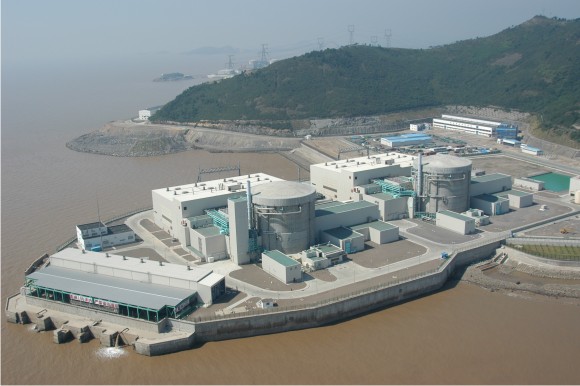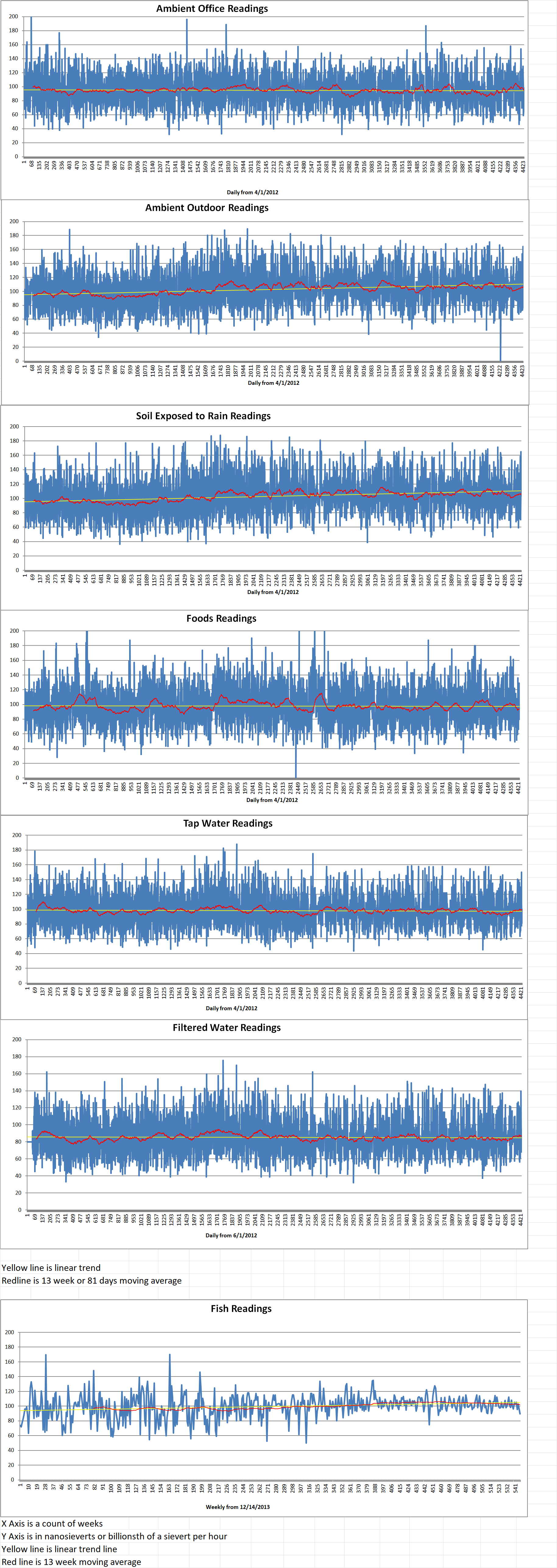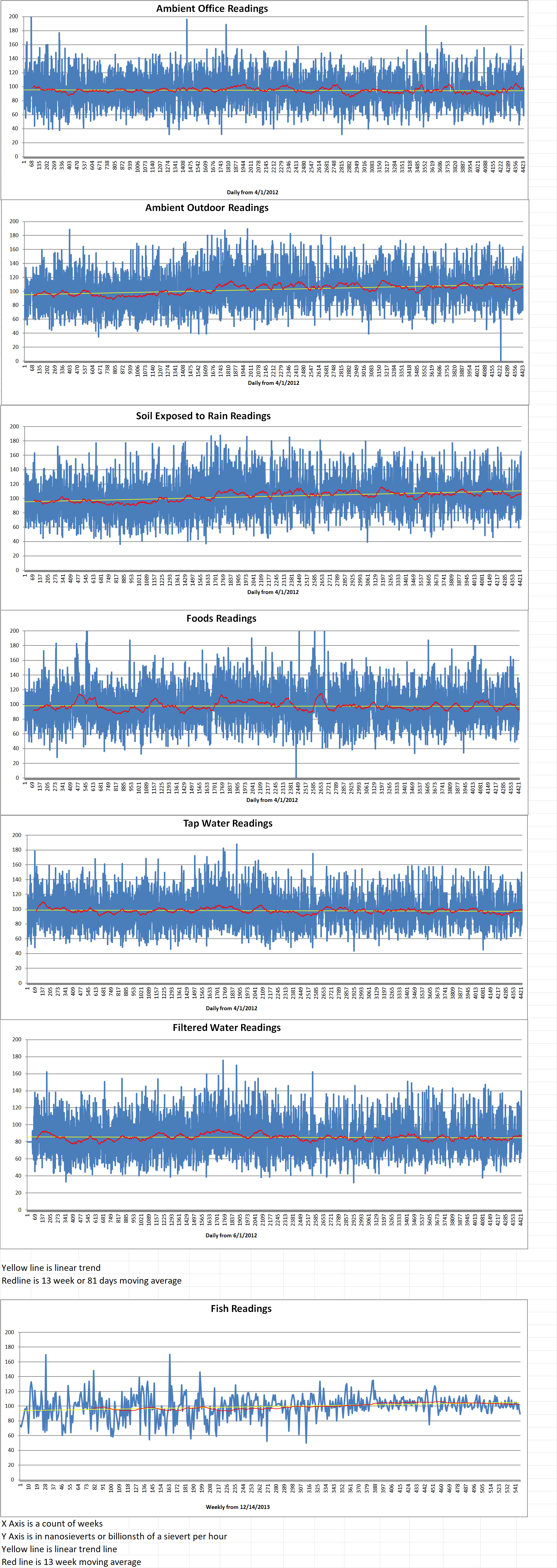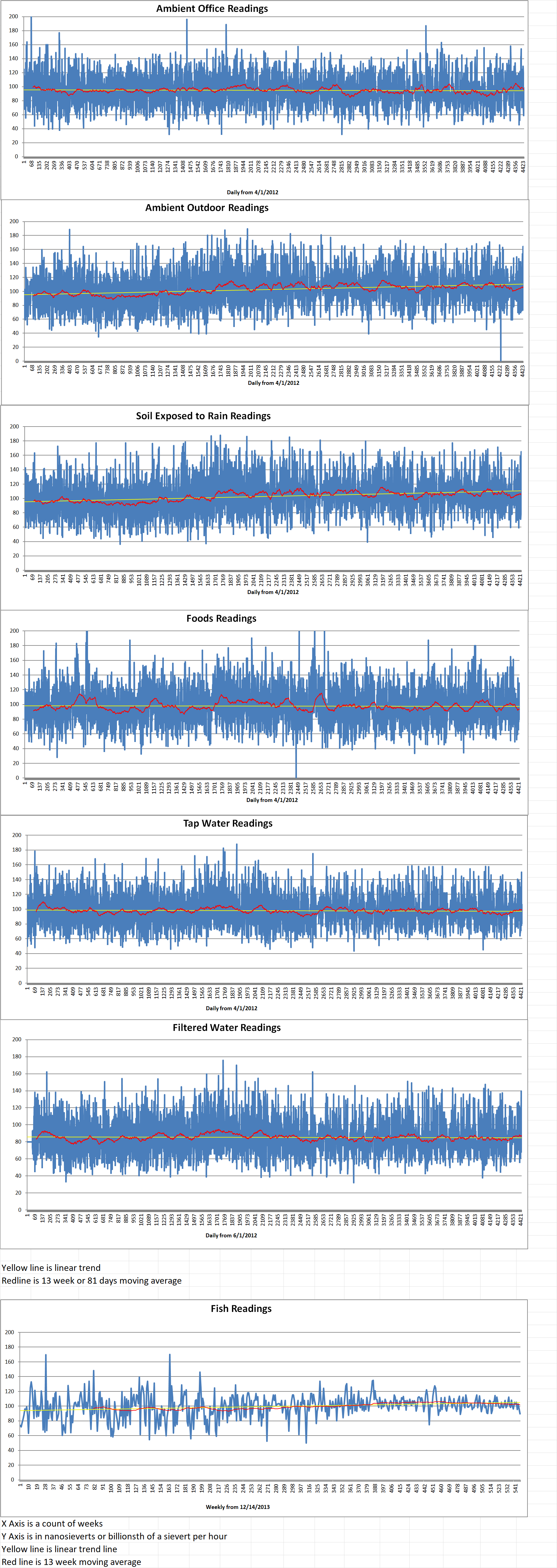Testing has been completed of a device for executing irradiation tests of various radioisotopes at the two pressurized heavy water reactors that make up Phase III of the Qinshan nuclear power plant in China’s Zhejiang province.
There is no isotope irradiation test function module in the original design of the pressurized heavy water reactor (PHWR). This means that the Qinshan project team needed to create a special device that could embed the isotope irradiation test function and is compatible with the existing design of the reactor. Most medical isotopes are short-half-life isotopes. This requires the rapid loading and unloading of irradiation test targets during the normal operation of the reactor.
The People’s Daily said, “After repeated adjustments, the project team and the design institute finally designed a prototype of the device concept.” The isotope irradiation test platform has the ability to automatically load and unload isotope irradiation targets online.”
The People’s Daily added, “During the debugging and verification process of the device, it underwent thousands of action tests, which fully verified the reliability of the device. On the 3rd of April in 2023, the National Nuclear Safety Administration officially approved Qinshan Nuclear Power to use the irradiation test device to conduct yttrium-90 irradiation tests. On the 23rd of April, the project team continued to work for nearly one hundred and twenty hours during the overhaul of Qinshan No.3 Plant. They successfully completed the device installation, cold commissioning and system identification operations. On the 14th of December, the first yttrium-90 target was successfully unloaded from the reactor and the hot test of the device was successfully completed.
The People’s Daily continued, “The platform has successfully realized the research and development and production of short-half-life medical isotopes for domestic commercial reactors, opening up a new path for the localization of medical isotopes and the development of radioactive drugs. In the future, Qinshan Nuclear Power will continue to deepen the production of reactor-irradiated isotope irradiation, and contribute to the independent and controllable supply of medical isotopes and the expansion of diversified applications of nuclear technology in China.”
The report mentioned that this marks the official completion of the first commercial reactor isotope research and development platform in China.
The China National Nuclear Corporation’s (CNNC) Qinshan plant comprises seven reactors. This makes it China’s largest nuclear power plant. Construction of Phase I of the plant was a three hundred MWe pressurized water reactor (PWR). It was the first indigenously-designed Chinese nuclear power station to be constructed. Work began in 1985, with the unit entering commercial operation in 1994. Qinshan Phase II is the location of four operating CNP-600 PWRs, built with a high degree of localization. Units 1 and 2, consisting of the first stage of Phase II, began operating in 2002 and 2004, respectively. Units 3 and 4 began commercial operation in October 2010 and April 2021. Phase III consists of two seven hundred and fifty megawatt pressurized heavy water reactors supplied by Atomic Energy of Canada Ltd and commissioned in 2002 and 2003.
In April this year, CNNC announced that the Qinshan plant has begun mass production at one of its PHWRs of carbon-14, which is used in medical and scientific research and in fields including agriculture and chemistry as well as in medicine and biology. Apart from very limited production in experimental reactors, all carbon-14 was previously imported.
Blog
-

Nuclear Reactors 1455 – China Begins Production Of Radioisotopes At The Qinshan Nuclear Power Plant
-
Nuclear News Roundup Dec 19, 2024
Canadian Nuclear Laboratories and Karlsruhe Institute of Technology to Collaborate on Fusion, Materials and Hydrogen Science & Technology finance.yahoo.com
Kazatomprom announces joint venture changes world-nuclear-news.org
Chilling Satellite Pics Expose Open Missile Hatches On Chinese Nuclear Submarine vndtv.com
Westinghouse, Aecon team up for nuclear new build projects world-nuclear-news.org
-

Geiger Readings for Dec 19, 2024
Ambient office = 86 nanosieverts per hour
Ambient outside = 106 nanosieverts per hour
Soil exposed to rain water = 109 nanosieverts per hour
Campari tomato from Central Market = 107 nanosieverts per hour
Tap water = 100 nanosieverts per hour
Filter water = 94 nanosieverts per hour
-

Radioactive Waste 938 – TEPCO And JAPC Are Working On The Recyclable Fuel Storage Center To Store Spent Nuclear Fuel In Japa
Japan’s Nuclear Regulation Authority (NRA) has granted an operating license for an off-site interim dry storage facility for spent nuclear fuel in Mutsu, Aomori prefecture. It is the first such facility in Japan for the temporary storage of spent nuclear fuel.
The Recyclable Fuel Storage Centre (RFSC) has been completed by the Recyclable-Fuel Storage Company (RFS). RFS is a joint venture of utilities Tokyo Electric Power Company (TEPCO) and Japan Atomic Power Company (JAPC).
TEPCO and JAPC formed RFS in November of 2005 and in March of 2007 it applied to the Japanese government for a license to build the facility. In August of 2010, the joint venture announced that it had obtained the approval of the Ministry of Economy, Trade and Industry for the design and construction of the RFSC. A groundbreaking ceremony for the RFSC facility was held that same month.
Construction work on the first storage building was completed in August of 2013. In December of 2013, new safety standards for nuclear fuel cycle facilities based on the lessons learned from the Fukushima Daiichi accident were introduced by Japan’s Nuclear Regulation Authority (NRA). As a result, the RFS was directed to conduct further assessments for the facility’s ability to withstand earthquakes, tsunami, volcanoes and tornadoes. The company submitted its initial design and construction program document to the NRA in March of 2016. The regulator approved its safety plans for the facility on the 11th of November 2020.
The RFSC facility will store the highly radioactive spent nuclear fuel assemblies from the utilities’ boiling water and pressurized water reactors in dry storage casks for up to fifty years until they are reprocessed at the Rokkasho plant which is under construction about thirty miles away. A mixture of recovered uranium and plutonium oxides would then be recycled into fresh mixed-oxide nuclear fuel at the J-MOX nuclear fuel manufacturing plant near Rokkasho.
The RFSC was originally expected to start operating in July of 2012 with an initial capacity of three thousand tons of spent nuclear fuel. The RFS plans to later increase this capacity to five thousand tons. RFS submitted an application to the NRA for a pre-use confirmation of the RFSC on 10th of February 2022.
Today, the NRA said, “It was confirmed that the pre-operation operator inspection was properly conducted, and that the construction was carried out in accordance with the approval of the design and construction plan and conformed to the technical standards.” The NRA accordingly issued a pre-use confirmation certificate to RFS which enables the operation of the facility to begin.TEPCO said in a statement, “We would like to express our sincere gratitude to the people of Aomori Prefecture, including Mutsu City, for their great understanding and cooperation since Mutsu City requested us to conduct a site feasibility study in 2000 and then invited us to host the facility. We believe that the interim storage business for spent fuel is important and effective from the perspective of expanding the storage capacity of spent fuel, providing flexibility to the operation of the entire nuclear fuel cycle, and contributing to medium- to long-term energy security.”
TEPCO added that “We will continue to support RFS so that they can proceed with their interim storage business with safety as their top priority.”
On 26th of September of this year, TEPCO announced that sixty-nine spent nuclear fuel assemblies from unit 4 of its Kashiwazaki-Kariwa nuclear power plant in Niigata Prefecture had been transported to the Recyclable Fuel Storage Centre. -
Nuclear News Roundup Dec 18, 2024
Oklo and Switch Form Landmark Strategic Relationship to Deploy 12 Gigawatts of Advanced Nuclear Power businesswire.com
Suppliers chosen for key components of Natrium demo plant world-nuclear-news.org
Northrop Grumman to Deliver US Navy’s E-130J Nuclear Command, Control and Communications Aircraft northropgrumman.com
Turkey explores nuclear plant payments to settle gas debt with Russia middleeasteye.net
-

Geiger Readings for Dec 18, 2024
Ambient office = 93 nanosieverts per hour
Ambient outside = 127 nanosieverts per hour
Soil exposed to rain water = 128 nanosieverts per hour
Blueberry from Central Market = 93 nanosieverts per hour
Tap water = 89 nanosieverts per hour
Filter water = 77 nanosieverts per hour
-

Nuclear Reactors 1454 – Last Energy Secures U.S. Expor-Import Bank Finance For A U.K. Microreactor
Microreactor developer Last Energy states that it has received a letter of intent from the Export-Import Bank of the U.S. (EXIM) for one hundred- and four-million-dollar debt financing relating to its project in South Wales in the U.K.
The company says that the letter, from the bank’s structured and project finance division, confirms its “willingness to diligence” the financing. It follows an in-depth review of Last Energy’s “technology, business model, manufacturing plan and access to nuclear fuel. Upon final commitment, the Bank’s facility would cover Last Energy’s entire costs for a single power plant installation”.
U.S.-based Last Energy is a spin-off of the Energy Impact Center which is a research institute devoted to accelerating the clean energy transition through innovation. Last Energy’s reactor technology is based on a pressurized water reactor with a capacity of twenty megawatts of electricity or eighty megawatts of thermal power. Power plant modules will be built off-site and assembled on-site.
A Last Energy plant, referred to as the PWR-20, is comprised of a few dozen modules that, the company says can “snap together like a Lego kit”. The PWR-20 is designed to be constructed, transported, and assembled within twenty-four months. It is scaled to serve private industrial customers, including data centers. Under its development model, Last Energy will own and operate its plug-and-play power plant on the customer’s site. It will bypass the decade-long development timelines of electric transmission grid upgrade requirements.
Last Energy has been advancing plans to develop four PWR-20 units on the vacant site of the Llynfi coal-fired power station. The company said the new plant would “provide energy security to local manufacturers, create jobs, and unleash a long-term economic investment in the region”. The Llynfi power station is a one hundred twenty-megawatt coal plant. It operated between 1951 and 1977. Following the decommissioning of the Llynfi in 1977, the fourteen-acre site has remained vacant.
Bret Kugelmass is the Founder and CEO of Last Energy. He said, “Receiving this Letter of Interest from EXIM is the latest in a series of recent milestones that further validates Last Energy’s unique approach to accelerating nuclear deployment by focusing on design for manufacturability. They put us through the wringer – interrogating our physics, technology, supply chain, business model, partnerships, and timelines to delivery – and, after 18 months of rigorous review, have determined that we’re ready for the next step.”
Last Energy said it has been actively engaging with the U.K.’s Office for Nuclear Regulation, Natural Resources Wales, Planning and Environment Decisions Wales, the Environmental Agency, and with local and national Welsh and U.K. officials. Last Energy has pledged to continue to do so throughout the project. The company said last October that it was targeting 2027 to commission the first plant, “following a successful planning and licensing process”.
Last Energy estimates the entire project represents a capital investment of three hundred and ninety-three million dollars, which will not require any public funding. Contracts with local suppliers would amount to more than thirty-eight million dollars, while more than one hundred full-time local jobs would also be created.
Last Energy announced agreements for thirty-four units in 2023 and began 2024 with agreements for fifty units. Of the agreements, thirty-nine of the eighty-four units are slated to be built to serve data center developers. The company says its goal is to ten thousand units in the next fifteen years.
The EXIM is the country’s official export credit agency “with the mission of supporting American jobs by facilitating U.S. exports. To advance American competitiveness and assist US businesses as they compete for global sales, EXIM offers financing including export credit insurance, working capital guarantees, loan guarantees, and direct loans”. -
Nuclear News Roundup Dec 17, 2024
Trump can negotiate to stop Iran from getting nuclear bomb: Blinken English.alarabiya.net
Global consortium with KHNP wins nuclear reactor refurbishment project in Romania news.koreaherald.com
Fort Smith city director reacts to nuclear waste storage proposal nwahomepage.com
US development agency announces grants for Bulgarian nuclear projects world-nuclear-news.org
-

Geiger Readings for Dec 17, 2024
Ambient office = 98 nanosieverts per hour
Ambient outside = 164 nanosieverts per hour
Soil exposed to rain water = 165 nanosieverts per hour
Avocado from Central Market = 80 nanosieverts per hour
Tap water = 81 nanosieverts per hour
Filter water = 68 nanosieverts per hour
-
Nuclear News Roundup Dec 16, 2024
China nearly triples nuclear arsenal since 2020, Pentagon report says abcnews.go.com
Iran’s nuclear program alarms world powers: No ‘civilian justification’ jns.org
TerraPower announces contract winners for Kemmerer nuclear plant capcity.com
House Bill would call nuclear energy green energy, expert says it may cause big problems spectrumnews1.com
